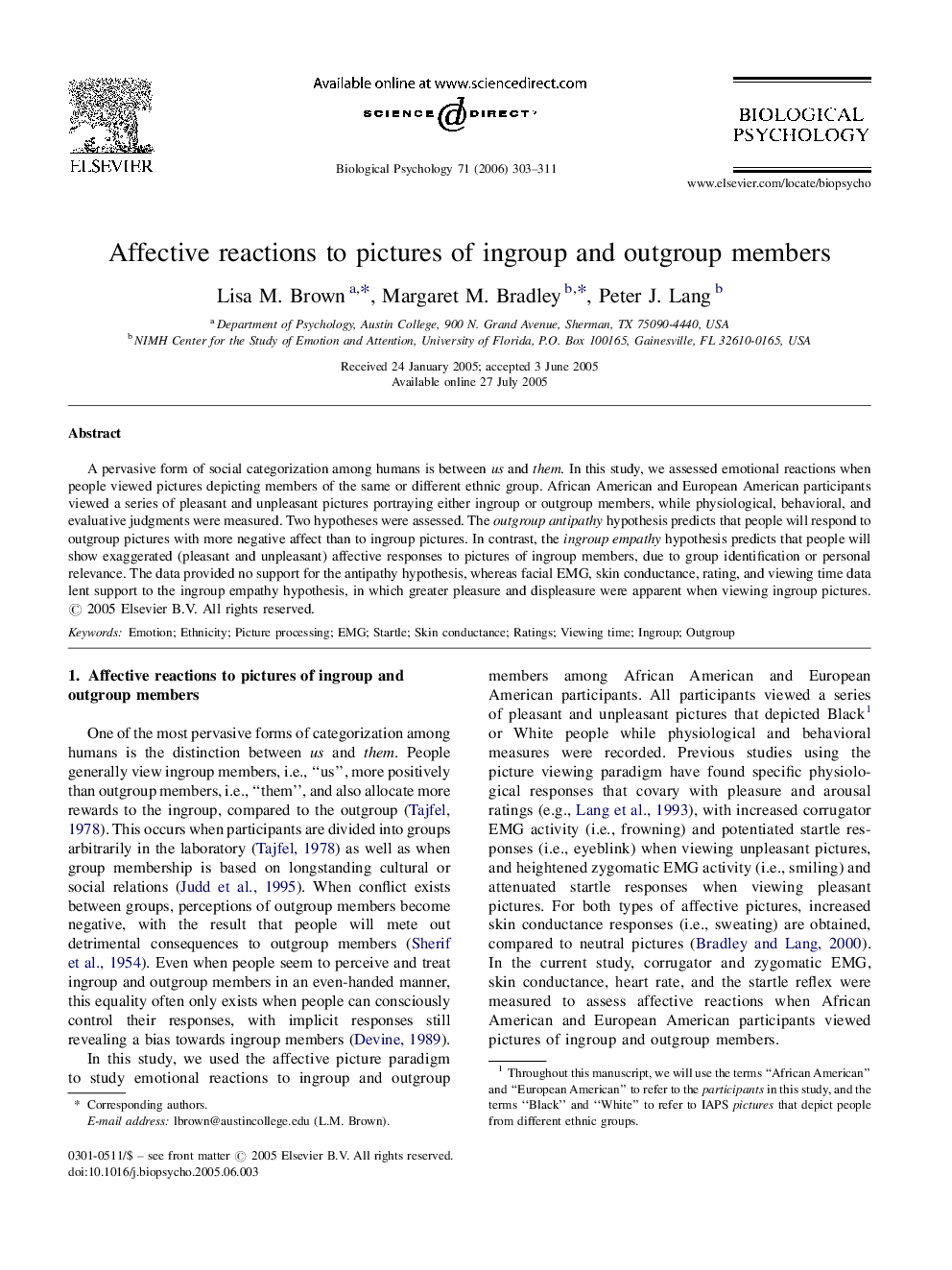| Article ID | Journal | Published Year | Pages | File Type |
|---|---|---|---|---|
| 921754 | Biological Psychology | 2006 | 9 Pages |
A pervasive form of social categorization among humans is between us and them. In this study, we assessed emotional reactions when people viewed pictures depicting members of the same or different ethnic group. African American and European American participants viewed a series of pleasant and unpleasant pictures portraying either ingroup or outgroup members, while physiological, behavioral, and evaluative judgments were measured. Two hypotheses were assessed. The outgroup antipathy hypothesis predicts that people will respond to outgroup pictures with more negative affect than to ingroup pictures. In contrast, the ingroup empathy hypothesis predicts that people will show exaggerated (pleasant and unpleasant) affective responses to pictures of ingroup members, due to group identification or personal relevance. The data provided no support for the antipathy hypothesis, whereas facial EMG, skin conductance, rating, and viewing time data lent support to the ingroup empathy hypothesis, in which greater pleasure and displeasure were apparent when viewing ingroup pictures.
